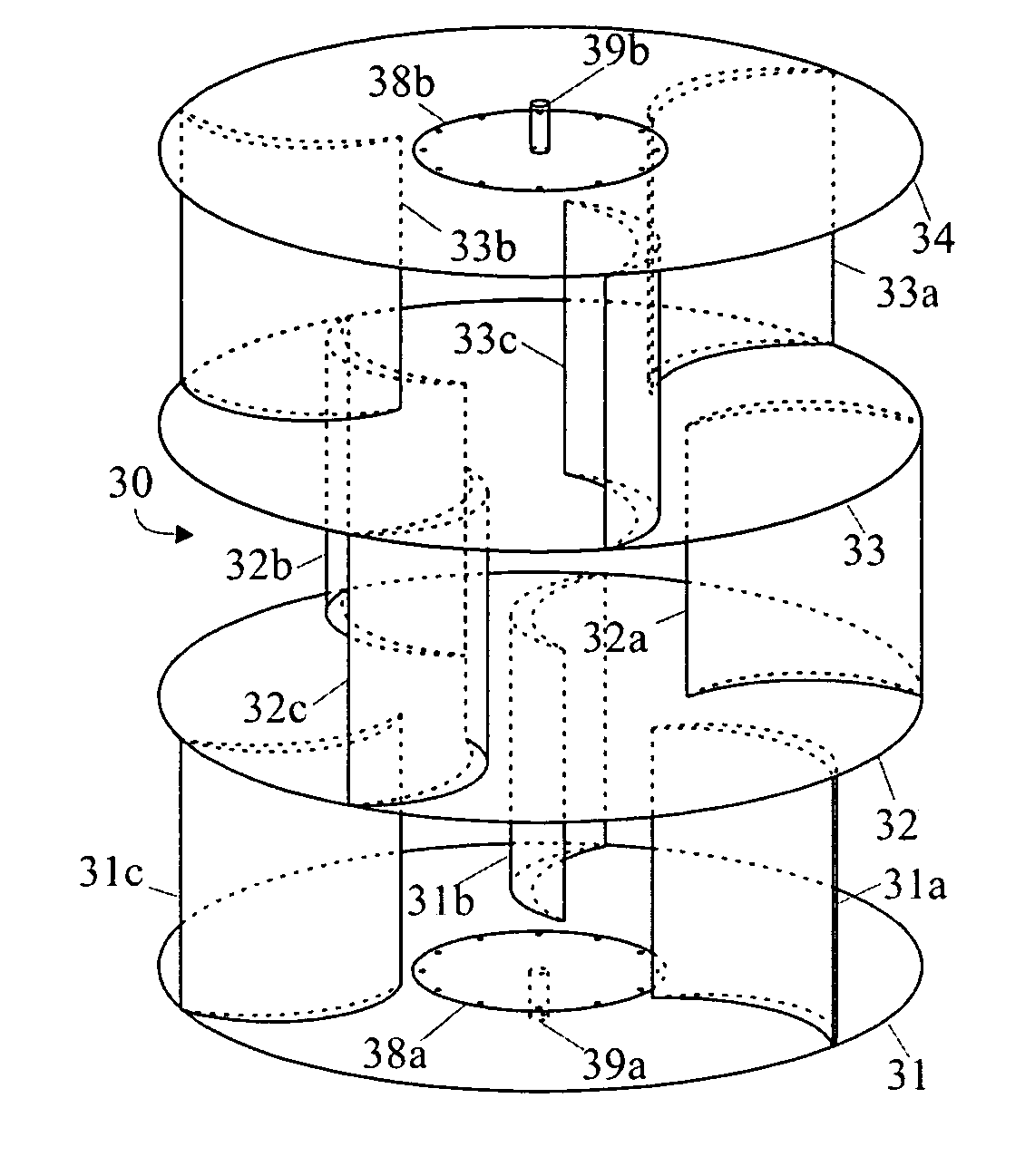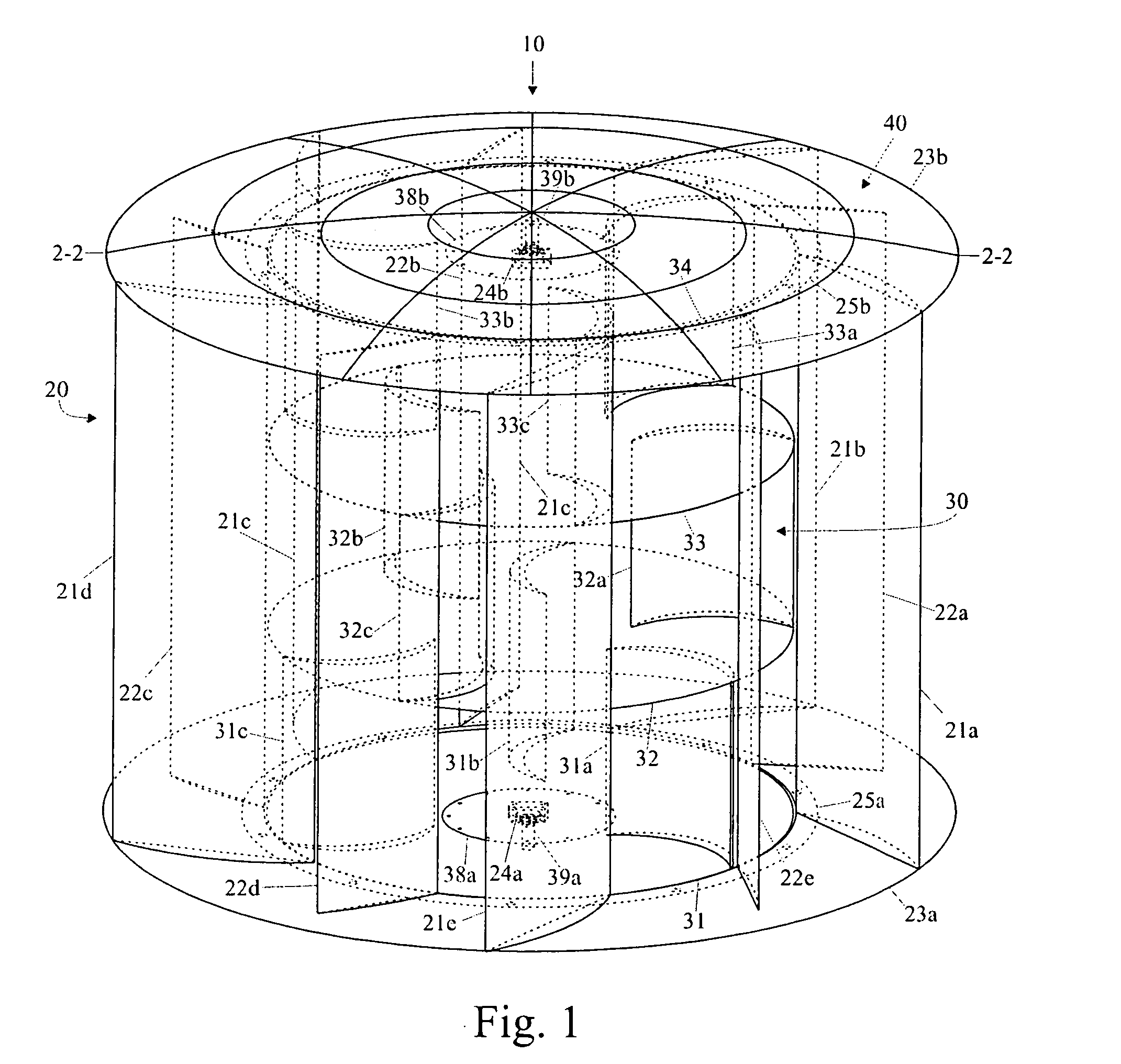Aerodynamic-hybrid vertical-axis wind turbine
a vertical-axis wind turbine and hybrid technology, applied in the direction of electric generator control, renewable energy generation, greenhouse gas reduction, etc., can solve the problems of crippling the enormous potential of the vertical-axis wind turbine, neither of these devices employ rotor airfoils that exhibit bidirectional characteristics, and suffer from the effects of salient back pressure, effectively and efficiently harnessing
- Summary
- Abstract
- Description
- Claims
- Application Information
AI Technical Summary
Benefits of technology
Problems solved by technology
Method used
Image
Examples
Embodiment Construction
[0077] Reference will now be made to the exemplary embodiments illustrated in the drawings, and specific language will be used herein to describe the same. It will nevertheless be understood that no limitation of the scope of the invention is thereby intended. Alterations and further modifications of the inventive features illustrated herein, and additional applications of the principles of the inventions as illustrated herein, which would occur to one skilled in the relevant art and having possession of this disclosure, are to be considered within the scope of the invention.
[0078] Various aspects of vertical axis wind turbines are discussed in U.S. Pat. No. 6,020,725 to Roberts and U.S. Pat. No. 6,465,899 to Roberts, which are incorporated by reference.
[0079] Referring more particularly now to the drawings of the present invention, FIG. 1 exemplifies a vertical-axis aerodynamic-hybrid wind turbine 10, having an intentionally open-ended mounting strategy. The turbine includes an a...
PUM
 Login to View More
Login to View More Abstract
Description
Claims
Application Information
 Login to View More
Login to View More - R&D
- Intellectual Property
- Life Sciences
- Materials
- Tech Scout
- Unparalleled Data Quality
- Higher Quality Content
- 60% Fewer Hallucinations
Browse by: Latest US Patents, China's latest patents, Technical Efficacy Thesaurus, Application Domain, Technology Topic, Popular Technical Reports.
© 2025 PatSnap. All rights reserved.Legal|Privacy policy|Modern Slavery Act Transparency Statement|Sitemap|About US| Contact US: help@patsnap.com



